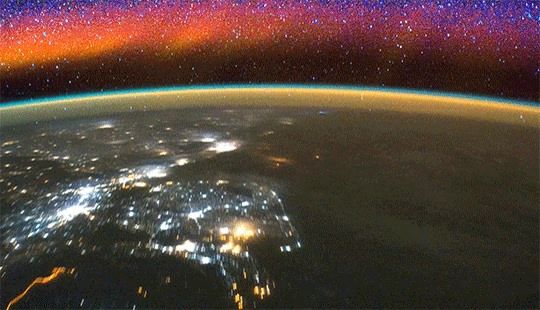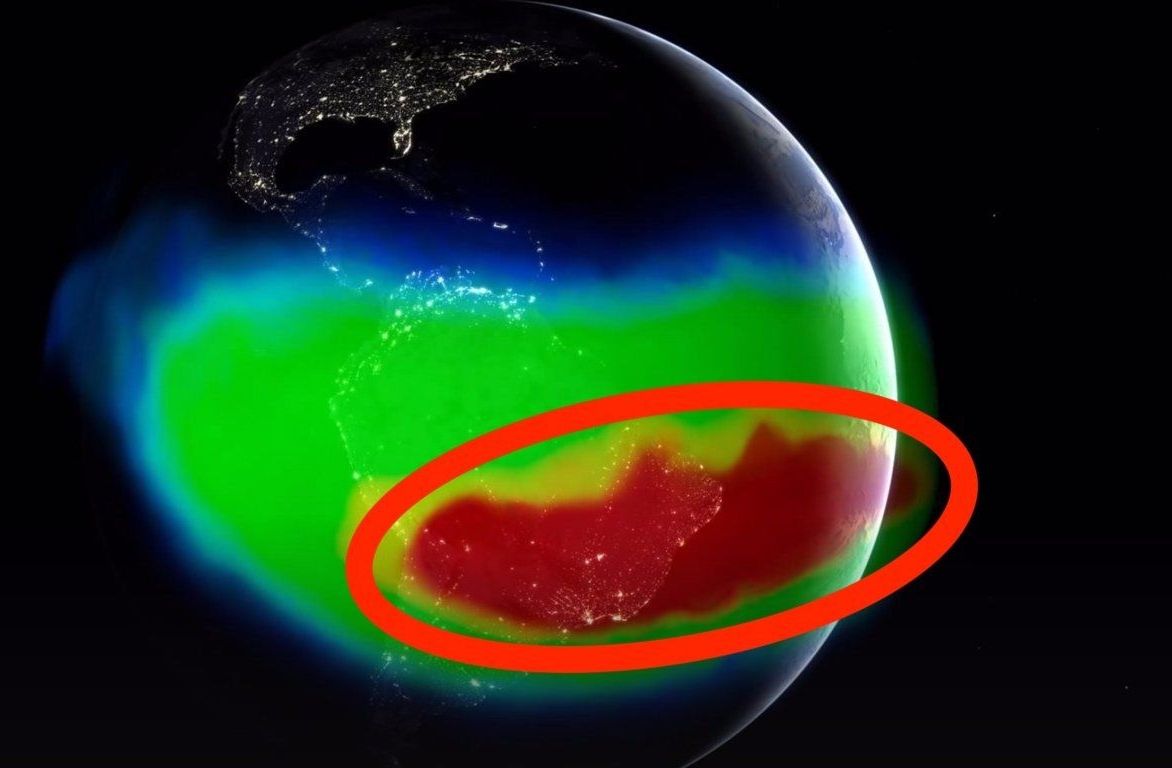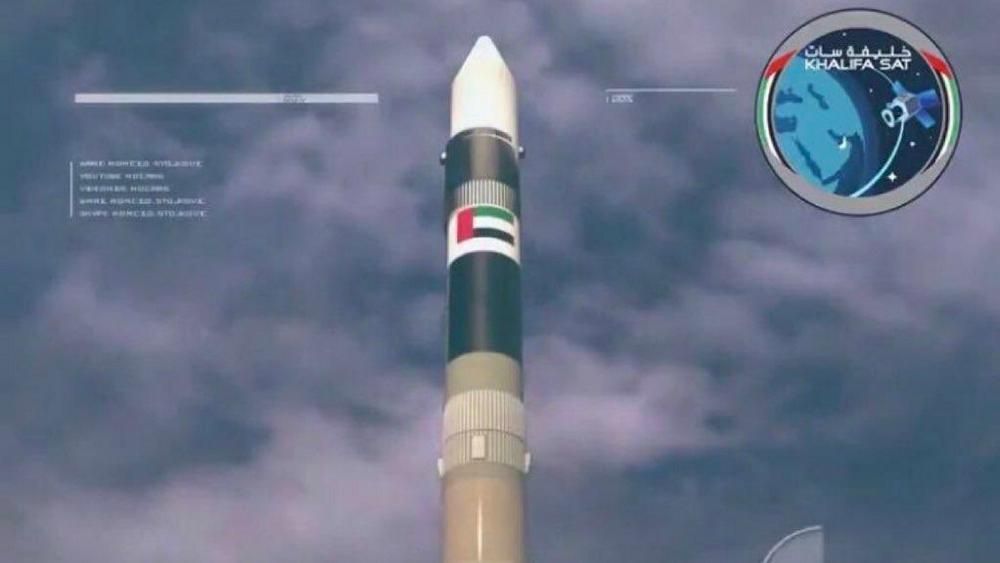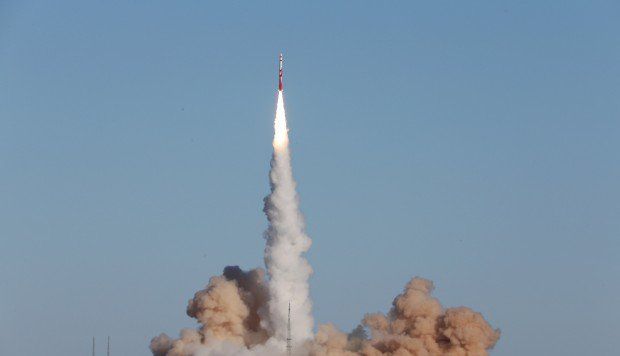Archive for the ‘satellites’ category: Page 158
Nov 7, 2018
New Satellites Will Use Radio Waves to Spy on Ships and Planes
Posted by Genevieve Klien in category: satellites
This month, HawkEye 360 will send up satellites that track the radio transmissions of ships, planes and other things on Earth, allowing them to be tracked by their communications.
Nov 6, 2018
Airglow in Earth’s upper atmosphere shines in red, green, purple and yellow in this view from the International Space Station
Posted by Michael Lance in categories: particle physics, satellites

Turbulence in this sea of charged particles can interfere with satellites 🛰 as well as communication 📡 and navigation 📶 signals. When it launches tomorrow, our #NASAICON mission will watch and image airglow, helping scientists better understand the extreme variability of the region where Earth meets space.
Nov 5, 2018
Researchers Can Now Monitor Whales Via Satellite
Posted by Genevieve Klien in category: satellites
The latest high resolution satellites can pick out whales surfacing in huge swaths of ocean, which will aid in conservation.
Nov 2, 2018
Quantum Navigation Could be as Accurate as GPS, Without Satellites
Posted by Genevieve Klien in categories: quantum physics, satellites
Nov 1, 2018
There’s a region over South America where NASA shuts down its satellites
Posted by Michael Lance in category: satellites
It’s called the South Atlantic Anomaly.
The closest radiation belt to Earth roams above South America. It is called the South Atlantic Anomaly and gives off high levels of radiation that has been known to destroy satellites.
Follow Tech Insider:On Facebook
Continue reading “There’s a region over South America where NASA shuts down its satellites” »
Oct 31, 2018
Diwata-2 successfully launched to space, makes first contact
Posted by Michael Lance in categories: energy, satellites
Contact successful!
Diwata-2 was successfully launched to space on October 29, 2018 at 12:08 GMT+08 from the Tanegashima Space Center in Japan via H-IIA F40 rocket. It is one of the small satellites piggybacked with the main payloads IBUKI-2, also known as GOSAT-2 (JAXA’s Second Greenhouse Gases Observing Satellite), and KhalifaSat, a remote sensing Earth observation satellite developed by the Mohammed bin Rashid Space Centre (MBRSC) in the United Arab Emirates. The other small satellites are the Japanese-made Tenkou, PROITERES-2, Stars-AO, and AUTcube-2. Diwata-2 was inserted into the Sun-Synchronous Orbit at an altitude of 621 km, 43 minutes and 20 seconds after rocket lift-off.
On Oct 29, 2018 at 13:52 GMT+08, initial contact was established between Diwata-2 and the Ground Receiving Station (GRS) located at the Department of Science and Technology Advanced Science and Technology Institute (DOST-ASTI). Short telemetry data was received from the satellite on that day. Diwata-2 was initially tracked using pre-launch orbital parameters. As of 12:40 PM yesterday, October 31, 2018, the GRS can now read the satellite’s status, including vital signs such as fully charged batteries, normal power consumption, and good communication link. Commands were successfully sent and initial check procedures will continue throughout the first week from launch. Initial image captures from the cameras can be expected in the coming days.
Continue reading “Diwata-2 successfully launched to space, makes first contact” »
Oct 30, 2018
The Air Force Wants Your Help Guarding Satellites From Space Junk
Posted by Michael Lance in categories: military, satellites
Oct 29, 2018
First Emitrati-made satellite launched into space
Posted by Genevieve Klien in categories: satellites, sustainability
KhalifaSat, the first-ever Emirati-manufactured satellite successfully launched into space from Japan’s Tanegashima Space Centre on October 29.
As well as KhalifaSat, the H-2A rocket also launched carrying Japan’s environment satellite, GoSat-2.
KhalifaSat is an Earth observation satellite set to monitor environmental changes, such as the effects of global warming in the North and South Poles.
Continue reading “First Emitrati-made satellite launched into space” »
Oct 29, 2018
China’s first private rocket mission to outer space ends in failure
Posted by Derick Lee in categories: business, military, satellites
China’s aerospace industry has traditionally been the domain of state-owned institutes and enterprises, but a huge amount of investment has poured into the private sector since 2015 when Beijing announced a national strategy to integrate military and civilian businesses.
Landspace Tech’s ZQ-1 took off from Jiuquan Satellite Launch Centre at 4pm on Saturday carrying a small satellite for state broadcaster CCTVMission failed due to problem with rocket’s third stage, company says.

















